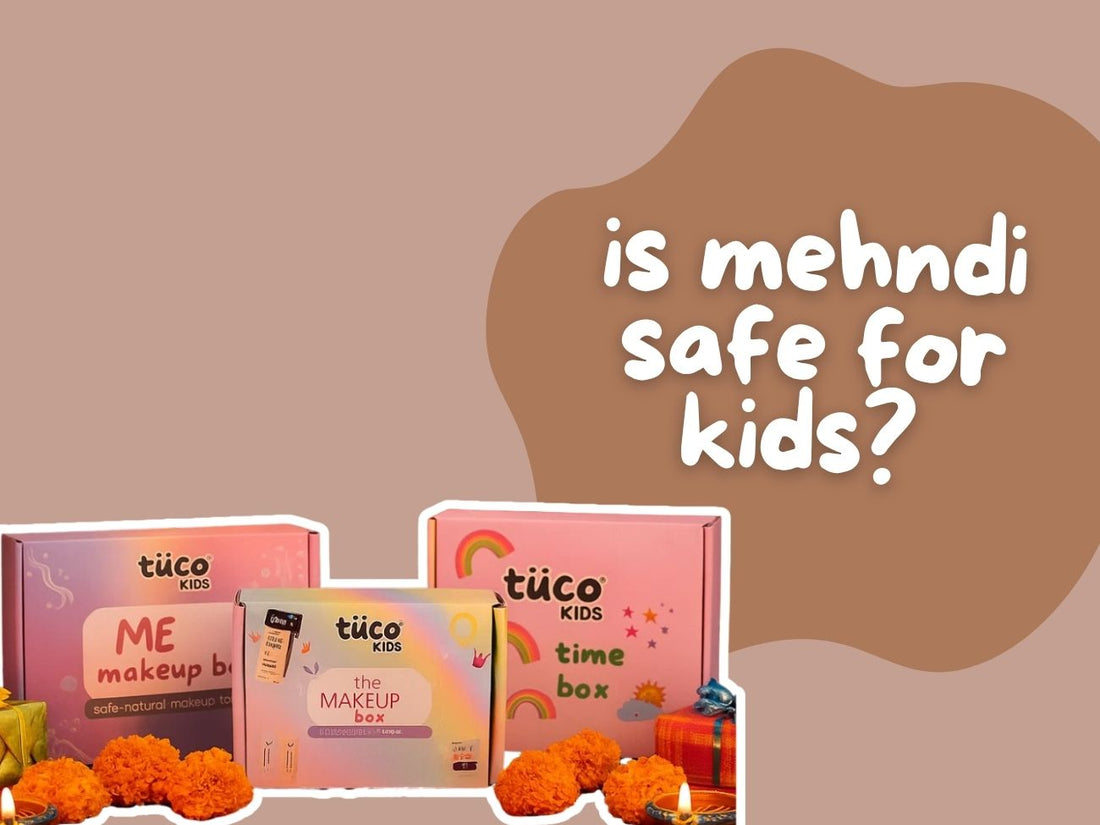
Is Mehndi Safe for Kids? Natural vs Chemical Henna Explained
Share
Mehndi, or henna, is a beloved tradition during festivals, weddings, and celebrations. Children often enjoy the fun of having their hands decorated with cute, simple designs. But as parents, it’s important to ask: is mehndi safe for kids? The answer depends on the type of mehndi used. While natural henna can be safe when applied carefully, chemical-based cones and black henna can cause serious reactions, especially on children’s delicate skin.
This blog explores the safety of mehndi for kids, the risks of chemical products, and the precautions parents should take before applying it.
Natural Mehndi vs Chemical Mehndi: What’s the Difference?
-
Natural Mehndi (Henna):
Made from the dried leaves of the henna plant, natural mehndi is usually greenish-brown and gives an orange-to-brown stain. It may be mixed with natural boosters like beetroot juice, amla, or rose water. When pure, it is generally safe for children’s skin.
-
Chemical Mehndi:
Many ready-to-use cones sold in markets are mixed with artificial dyes, preservatives, and strong essential oils. These make the color darker or speed up staining but can irritate sensitive and delicate skin of young kids.
The Risks of Black Henna
Black henna is one of the most harmful types of mehndi, especially for children. It often contains PPD (para-phenylenediamine), a chemical dye that darkens the stain quickly but is unsafe.
Possible side effects include:
-
Redness, itching, and rashes.
-
Blisters and burns on the skin.
- Permanent scarring or long-term allergies.
For children with sensitive or eczema-prone skin, the risk is even higher. Experts strongly recommend avoiding black henna completely.
Tuco Kids Skincare for Sensitive and Dry Skin
Children with sensitive or dry skin need extra protection, especially during festive activities. Tuco Kids offers products specially crafted for these needs, from oat and rice water bathing bars, soothing gels, and rash-protection soaps for sensitive skin, to turmeric soaps, saffron creams, and hydrating lotions for dull or dry skin. Each product is safe for ages 3 to 14, free from harsh chemicals, and designed to keep your child’s skin comfortable, soft, and healthy every day.
How to Prepare Natural Henna Paste for Kids at Home
Making mehendi at home ensures it’s free from chemicals and safe for children’s delicate skin. Here’s a simple way to prepare it:
-
Take ½ cup of pure henna powder (sifted to remove lumps).
-
Add 2–3 tablespoons of lemon juice and mix into a smooth paste.
-
To enhance the color naturally, you can mix in:
Beetroot juice for a soft reddish tint.
Brewed black tea (cooled) for a deeper brown stain.
Amla powder for a safe, darker tone.
-
Cover the bowl with plastic wrap and let it rest overnight (6–8 hours) for the dye to release.
-
Once ready, fill into a plastic cone or piping bag for easy application.
This natural paste is gentle, safe, and child-freindly
Why Patch Tests Are Essential
Even with natural mehndi, parents should always do a patch test before applying a full design.
-
Apply a small dot of mehndi on the inside of your child’s wrist or behind the ear.
-
Leave it for a few hours.
-
If no irritation, redness, or itching appears within 24 hours, it’s likely safe to use.
A simple patch test can save children from painful skin reactions.
Safe Tips for Applying Mehndi on Kids
-
Check the ingredient label: only Lawsonia inermis (henna) or plant additives like hibiscus, amla. No synthetic dyes, PPD, or preservatives.
-
Look for freshness / batch date. Older powders lose potency.
-
Opt for fine powders (sifted) to avoid grainy texture that clogs cones.
-
Select trusted / certified brands that openly mention “100% natural / pure / no chemicals.”
-
Avoid strong essential oils like clove or eucalyptus in large amounts.
- After washing, moisturize hands with a child-safe lotion to prevent dryness.
Natural Henna Brands Available in Market
-
Khadi Herbal Nut Brown Henna: Gives a natural brown tone, a good option if pure red henna seems too bright.
-
We Herbal Natural Henna Powder: Pure powder with no added chemicals, which could be an ideal base for homemade pastes.
-
Banjara’s Natural Henna: A more budget-friendly natural option.
-
Khadi Henna & Hibiscus Powder: A blend that includes hibiscus for extra conditioning.
After mehndi, kids’ hands may feel dry or itchy. Tuco Kids skincare with soaps, gels, and lotions for ages 3–14 keeps their skin soft, calm, and hydrated during festive fun.
Tuco Kids offers a complete care range for children ages 3–14, including skincare, haircare, and everyday essentials. With safe, toxin-free formulas, every product is made to protect and care for kids’ delicate skin and hair. Check full range of Tuco Kids products here.
To Sum it up,
Mehndi is a joyful tradition, but parents must be cautious about the type of product used. Natural henna is the safest option for kids, while chemical cones and black henna should always be avoided due to their harmful ingredients. A simple patch test, along with choosing trusted, natural formulations, ensures that children can enjoy mehndi designs without risk.
By combining cultural fun with safe practices, parents can keep mehndi both beautiful and worry-free for their little ones.

